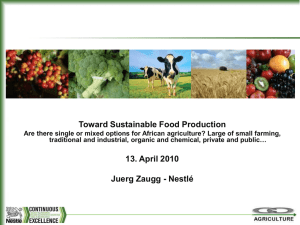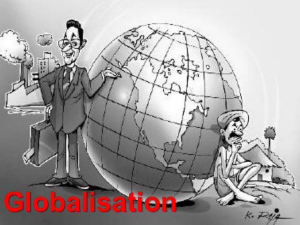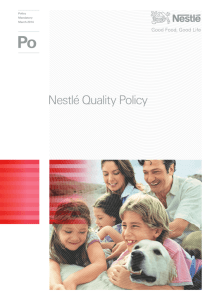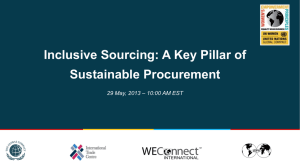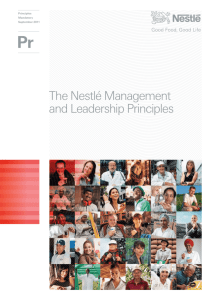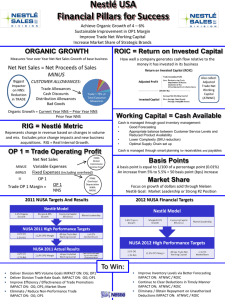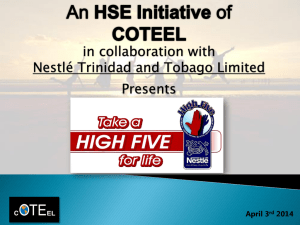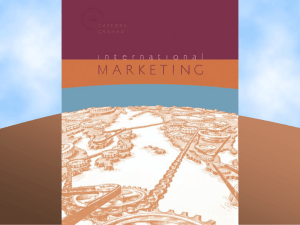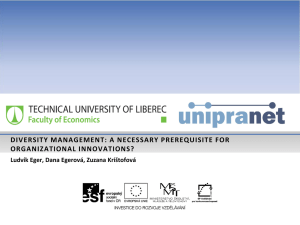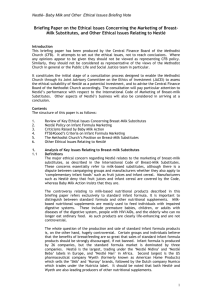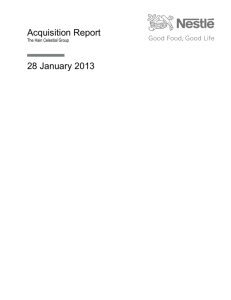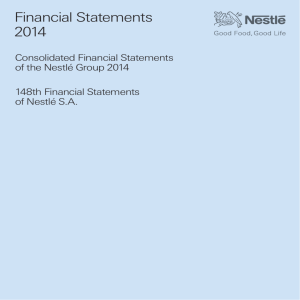Presentation of the company “NESTLE”
advertisement
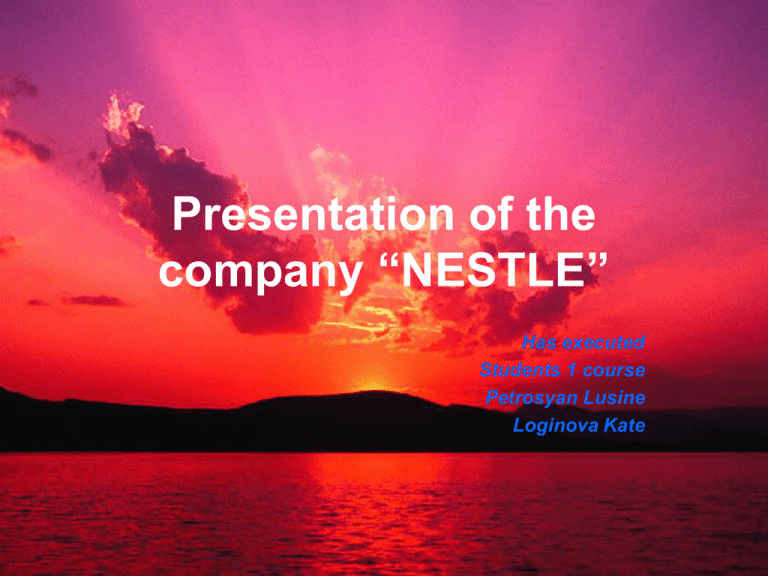
Presentation of the company “NESTLE” Has executed Students 1 course Petrosyan Lusine Loginova Kate NESTLE (contents): 1. 2. 3. 4. 5. 6. History Consumer Services Quality Infant Formula Policy Gene Technology Production History • • • • • • • • • • In 1860s Henri Nestle, a pharmacist, developed a food for babies who were unable to breastfeed. By the early 1900s, the company was operating factories in the United States, Britain, Germany and Spain 1918 -1938 The 1920s saw Nestlé's first expansion into new products 1938 -1944 World War II. Profits dropped 1944 -1975 The end of World War II was the beginning of a dynamic phase for Nestlé. In 1947 came the merger with Maggi seasonings and soups. 1996 The first half of the 1990s proved to be favorable for Nestlé: trade barriers crumbled and world markets developed into more or less integrated trading areas. Consumer Services At Nestlé, we are committed to offering consumers high-quality food products that are safe, tasty and affordable. The Nestlé Seal of Guarantee is a symbol of this commitment. We also believe in maintaining regular contact with our consumers. This applies both to how we present our products and to how we address our consumers' questions and concerns. When Henri Nestlé prepared his first boxes of infant formula for sale, he put his address on the packages so people would know where to go if they had questions. Today, our Consumer Relationship Panel with the words "Talk to Nestlé" expresses the same commitment. This is why we have a worldwide Nestlé Consumer Services network devoted to caring for our consumers. Our people have expertise in a wide range of areas such as nutrition, food science, food safety and culinary expertise. They provide the prompt, efficient and high quality service that consumers expect from Nestlé. In addition, we teach them talk with consumers and above all, to listen. Listening helps us to understand what people want. Nestlé uses the insights gained from relationships with consumers to drive product development. At Nestlé, we care for our consumers because our success depends on meeting their needs and expectations. Through listening and understanding, we can make products that they will want to use all through their lives. Quality ﻼThe customer comes first ﻼQuality is a competitive advantage ﻼQuality is a joint effort ﻼQuality is made by people ﻼQuality is action ﻼQuality is the cornerstone of our success Infant Formula Policy • • • • • • • • • • We are committed to ensuring that the best interests of mothers and babies are served by our employees around the world. The Nestlé Infant Formula in developing countries: DOESencourage and support exclusive breastfeeding as the best choice for babies during the first months of life DOESbelieve that there is a legitimate market for infant formula 3 when a safe alternative to breast milk is needed DOESsupport efforts by governments to implement the International Code through legislation, regulation, or other appropriate measures DOES NOTadvertise infant formula to the public DOES NOTpermit staff whose responsibilities include the marketing of infant formula to make direct contact with mothers, except in response to consumer complaints DOES NOTgive incentives to its staff based on infant formula sales DOES NOTuse pictures of babies on its infant formula packs DOES NOTallow educational material relating to the use of infant formula to be displayed publicly in hospitals and clinics WILLtake disciplinary measures against any Nestlé personnel who deliberately violates this policy. Gene Technology • Gene technology in food production • With this vast experience, Nestlé recognizes the potential gene technology has in the longer term to improve the quality, availability and nutritional value of food. Gene technology has the potential to increase food production and to support sustainable agricultural practices. In some instances, positive health effects have been confirmed. For those reasons, Nestlé supports a responsible application of gene technology for food production based on sound scientific research. • Safety • The safety of our products and the integrity of the ingredients from which they are manufactured are paramount to Nestlé. Genetically modified crops, as all raw materials used by Nestlé, comply to strict regulatory and safety evaluations. WHO, FAO, OECD and numerous independent scientific bodies have concluded that genetically modified crops, including ingredients derived from them, that have passed food safety evaluation procedures, can be registered as safe for use in food production. Nestlé concurs with their shared opinion that such crops are as safe as their traditional counterparts. Products BabyFoods The factors that made baby foods success in the early days of the Nestlé company — quality and superior nutritional value — are still as valid today for the wide range of infant formula, cereals and baby food made by Nestlé. The World Health Organization (WHO) recognizes that there is a legitimate market for infant formula, when a mother cannot or chooses not to breast feed her child. Nestlé's expertise as the world's leading infant food manufacturer, gained over more than 125 years, is put at the disposal of health authorities, the medical profession and mothers and children everywhere. Breakfast Cereals • • • • Breakfast Cereals Although cereals have been with mankind in one form or another for millennia, it was not until the mid 19th century that scientific research, technological innovation, and the influence of a group of American health reformers, gave rise to the crunchy foodstuff we know today as breakfast cereal. Nestlé has a joint venture with General Mills outside North America, Cereal Partners Worldwide, which is active in more than 80 countries. The joint venture began in 1990, and its rapid growth has been characterized by strong branding and lately the launching of breakfast cereal brands into the fast-growing cereal bar market. Ice Cream • • • • • at the end of the 19th century, both making and freezing it became easier, and together with the invention of the ice cream cone, made the product boom. Today, the United States is the absolute leader in terms of volume consumed, but the highest per head consumers are in New Zealand. Flavors you'd never have thought of and yet they're commercially available: Sorbets - Smoked Salmon, Tomato, Cucumber Ice Creams - Garlic, Avocado, Sweet corn. The ice cream cone is the most environmentally friendly form of packaging. A Syrian from Damascus, Ernest E Hamwi is credited with its invention. Apparently, during the 1904 St Louis World's Fair, his waffle booth was next to an ice cream vendor who ran short of dishes. Hamwi rolled a waffle to contain ice cream and the cone was born. Chocolate • • In 1875, a 31-year-old candy maker in Vevey named Daniel Peter figured out how to combine milk and cocoa powder. The result — milk chocolate. Peter, a friend and neighbor of Henri Nestlé, started a company that would quickly become the world's leading maker of chocolate. In 1929, the almost inevitable merger took place as Nestlé acquired Peter, Cailler, Kohler. Bottled Water • • • • • • Nestlé began its entry into the water business in 1969. In 1992, Nestlé was the first company to dare to launch a mineral water, Valvert, in five different countries at once. By the end of 1997, the Group was present on every continent, and the purchase of San Pellegrino gave it the leadership in the Italian market. In 1998, for the first time in its history, Nestlé associated its name with a bottled water: Nestlé Pure Life. Nestlé Pure Life is drinking water that has been treated and remineralized using a standardized industrial process to ensure purity and quality and is marketed in emerging countries. A second product with the Nestlé name was launched in May 2000, this time in six European countries: Nestlé Aquarel. A natural spring water currently from nine different springs in France, Germany, Belgium, Hungary, Italy and Spain, Nestlé Aquarel also uses the multi-source concept to satisfy new consumer expectations, especially for water with a low mineral content that the whole family can drink. Today, Nestlé Waters is established in 130 countries and markets about 70 different brands. The Group is able to offer top quality brands and innovative packaging to meet the individual needs of the water consumer all over the world. Our brands • From shelf-stable solutions to chilled dairy! Our Brands • Providing food and beverage proffessionals with a wide range of solutions Nestle forever!!! Discover the world of delicious Nestle products
